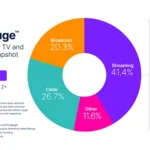The commodities
market remains an exciting space to monitor in August. Commodities play a pivotal
role in the financial markets, an asset class employed to add diversification
to a portfolio,
acts as an inflation hedge, and is used for speculation and investment
purposes.
From gold clocking record highs to oil and
copper prices navigating lower levels, the FP Markets
Research Team have gathered five notable commodities, both hard and soft,
worthy of your watchlist this month.
Gold
The price of gold
versus the US dollar (ticker: XAU/USD)
remains a widely watched precious metal, and rightly so. Year to date, the
precious metal has rallied +19%, extending gains in 2023 (+13%). July also
witnessed the precious metal reach another record high of $2,483, with scope to
continue outperforming.
With the US Federal Reserve (Fed)
anticipated to begin reducing its Fed funds target range in September, along
with US Treasury yields and the US dollar (USD) recently exhibiting a strong
sell-off, persistent price pressures in the US, as well as geopolitical risks,
gold could navigate higher terrain over the coming months.
Commenting on the yellow metal’s future
performance, US investment management firm VanEck, said: ‘Considering the
current macroeconomic and geopolitical environment […] we believe that gold
prices could reach their inflation-adjusted highs of $2,800 per ounce in the
near term’.
Technically Speaking:
While resistance is limited in this market,
upside momentum has noticeably slowed. Take note of the strong upmove between
February and April this year (black rectangle) and compare this to subsequent
months (red ascending channel); we do not need a technical indicator to show
that buying has slowed in recent months.
That said, the uptrend remains intact, and
fresh all-time highs are a regular occurrence. In addition, the recent downmove
from $2,483 has so far failed to register anything meaningful, suggesting that
selling is weak and buyers are perhaps gearing up for another leg higher.
XAU/USD – Chart Created by TradingView
West Texas Intermediate (WTI) Oil
Compared to the USD, WTI oil
has fared poorly since reaching a high of $84.49 at the beginning of July this
year. Oil recorded its fourth straight loss last week (the longest losing
streak since late 2023), down -3%, sending price action to within striking
distance of June’s lows of $72.43. Year to date, however, oil remains in
positive territory despite trading considerably off best levels (+3.9%).
Weakening global fuel demand and frail manufacturing
data from the US, Europe and Asia do not bode well for oil prices. Crude oil
demand for July was the lowest in two years out of Asia; China’s fuel import
demand was down by more than -10% in the first half of the year. However,
geopolitical tensions in the Middle East also remain a concern. Oil prices
rallied last Wednesday as Middle East tensions grew over the assassination of
Hamas’ political leader during a visit to Iran.
Overall, oil’s picture is not optimistic. This
highlights that sellers could maintain dominance in this market this month,
with June’s lows targeted and a possible run to the December 2023 low of $67.74.
Technically Speaking:
Leaving the resistance
area between $81.26 and $79.92 unchallenged, support is now within a stone’s
throw away from welcoming price action at $72.69. This follows the strong
downside push in the second half of last week. Should price continue beyond
said support, thin support is visible until $68.65 since levels of support
between the underside of $72.69 and $68.65 appear to have been consumed.
WTI Oil – Chart Created by TradingView
Copper
Copper, a widely traded base metal against the
USD (ticker: XCU/USD), is up by +6.2% year to date, though it is down by -20% compared
to its record highs of $5.19.
China’s economic growth (as measured by the Gross
Domestic Product [GDP])
was weaker than expected in Q2 24, largely influenced by increased global trade
restrictions. Copper imports from China have slowed as the country deals with
stalling property and industrial sectors. This influences the price of copper
as China accounts for more than +50% of global demand for copper.
Technically Speaking:
Since May this year, the price of copper has
been on the back foot versus the USD, clearing supports with relative ease.
Price action is also contained in a descending channel, taken from the high and
low of $5.19 and $4.43. Technically, the chart demonstrates room for further
selling to support at $3.96, a level complemented by the channel support, and
trendline support, extended from the low of $3.51.
Copper – Chart Created by TradingView
Aluminium
Aluminium versus the USD (ticker: XAL/USD) has declined
since topping out at $2,800 at the end of May this year, falling -20% from
highs. The fall has been largely triggered by demand concerns from China, the
largest producer and consumer of aluminium. Soft manufacturing data from the US
has dampened buyer sentiment, thus weighing further on the base metal’s price.
Despite weakened demand from not only the US
but also other major developed countries, China’s overproduction has created a
surplus of supply.
Technically Speaking:
According to chart studies, the price of
Aluminium in terms of USD has been lower since reaching a high of $2,800.
Price also recently stepped below trendline
support, taken from the low of $2,110, and retested the underside of the
ascending line to form resistance. What also might interest technical analysts
is the head and shoulders top pattern (head at $2,800), which was completed in mid-July
(neckline breached). Price has yet to reach the pattern’s profit objective at $2,131,
therefore, further underperformance could be seen for the base metal this
month.
Aluminium – Chart Created by TradingView
Cocoa
Against the USD, Cocoa witnessed strong gains
at the beginning of 2024, rising to record highs of $11,635 in April. Despite
the spirited start to the year, demand for the soft commodity has weakened,
declining by approximately -40% from said highs.
The fall in the price of
Cocoa is due to several factors, including demand concerns, unfavourable
weather conditions, diseases, fertiliser shortages, and ageing trees. These
factors have led to disappointing Cocoa output from two of the largest Cocoa
producers in the world: the Ivory Coast and Ghana, which account for more than +50%
of the world’s production.
Technically Speaking:
Versus the USD, Cocoa
emphasises a bearish tone. Support between $6,554 and $6,847 is likely an area
of interest for many traders and investors. Interestingly, the second test of
the area managed to drive enough buying interest to reach a high of $10,197
(numbered 1). However, upon returning to the area, buying was lacklustre, only
reaching a high of $8,063 (numbered 2). This places a bold question mark on the
support and suggests an impending break lower to perhaps target support coming
in at $5,794.
Ready to Start Trading Commodities?
Ready to Start Trading Commodities?
FP Markets, a global Forex and CFDs
brokerage, provides access to more than 10,000 tradeable products via CFD
pricing (Contracts for Difference). In addition to a wide selection of
commodities, you can trade currencies (Forex),
Stocks, Indices,
Bonds,
Exchange-Traded Funds (ETFs),
and Digital
Currencies, all from a single trading platform.
Consider opening a Live Trading Account with FP
Markets today and explore the commodities market using unrivalled trading
platforms, such as MetaTrader 4 (MT4)
and MetaTrader 5 (MT5),
cTrader
and TradingView.















